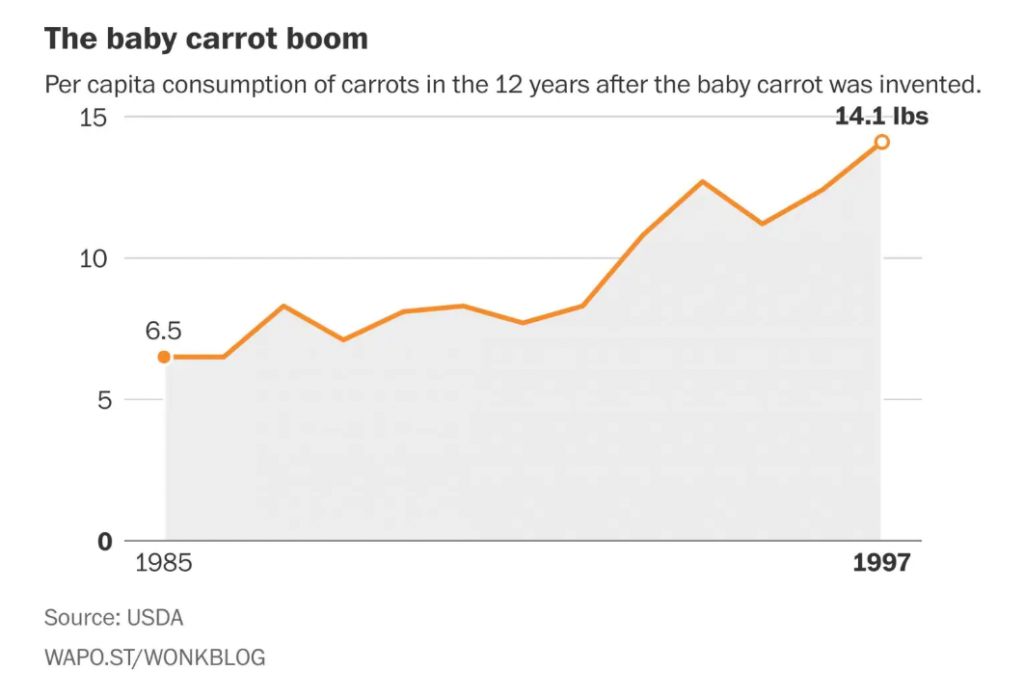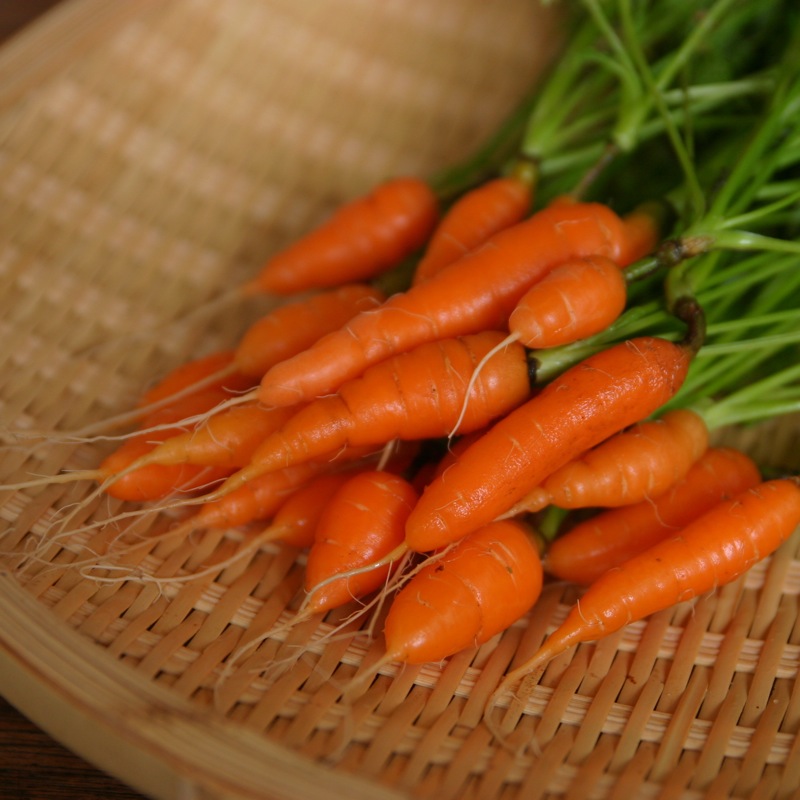History of the Baby Carrot:
1980 – Carrot businesses had more waste than sales, most of their crops did not meet sales standards.
1986 – Mike Yurosek, a carrot farmer in California, took a potato peeler and started shaping the gnarled unsellable carrots.
-
- As you can imagine, the potato peeler was far to labour intensive to ever work large scale.
- Yurosek bought a green-bean cutter from a frozen-food company that was going out of business. The machine cut the carrots into perfect 2-inch pieces. (Still the standard size for Baby Carrots today!)
1987 – A year after Yurosek pitched his idea to local stores, carrot consumption increased by 30% in the U.S.
1997 – The average American was eating approximately 14 pounds of carrots per year = 117% more than in 1987.
2016 – Baby carrots account for 70% of carrot sales

Via Washington Post
“The development and rapid consumer acceptance of packaged fresh-cut carrot products during the 1990s has helped the carrot industry evolve from a supplier of low-value bulk products to marketer of relatively upscale value added products … fresh-cut carrot products have been the fastest growing segment of the carrot industry since the early 1990s. Within the $1.3 billion fresh-cut vegetable category, carrots account for the largest share (about half) of supermarket sales, followed distantly by potatoes, celery, and others.” – From a 2007 USDA report
The Environmental impact of Baby Carrots
- Twisted, gnarled, knobbly, bent or broken carrots can’t be sold. Before Yurosek’s invention of the baby carrot, he was wasting 70% of the carrots he harvested.
- He used some to feed his animals but with ~400 tons of waste a day he couldn’t keep up
- Allegedly the fat on his pigs’ had begun to turn orange from their carrot rich diet.
- After the innovation of the baby carrot and with their large scale success at markets and grocery stores, carrot waste dropped dramatically.
- Full carrots sold to consumers are often peeled at home with all undesirable parts removed, such as the stem. Baby carrots, because they are peeled and shaped in factories, produce less waste as all scraps removed can be used by farmers for animal feed or compost.
- Baby carrots have changed the carrot industry to be much more productive and less wasteful.
http://www.carrotmuseum.co.uk/babycarrot.html#full https://www.washingtonpost.com/news/wonk/wp/2016/01/13/no-one-understands-baby-carrots/ https://en.wikipedia.org/wiki/Baby_carrot


I just spent a ridiculous amount of time measuring my baby carrots to see if they’re all 2” 🙂
And do they measure up? 😆
Indeed they do; although the regulations clearly don’t apply to the circumference of the carrot!